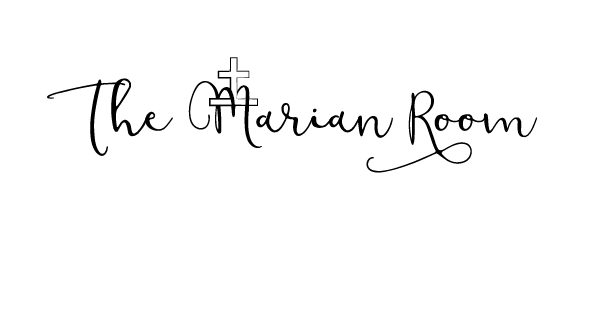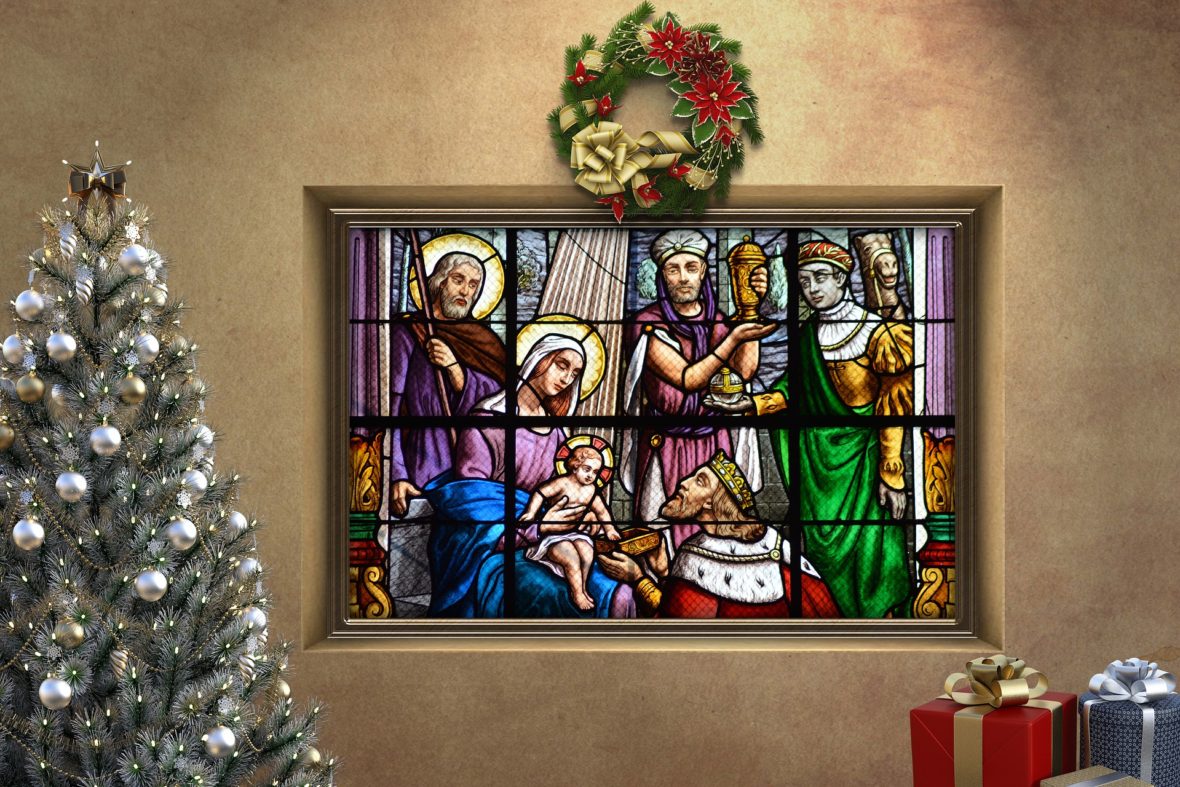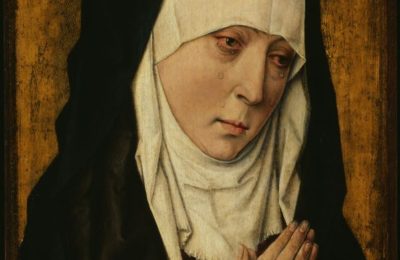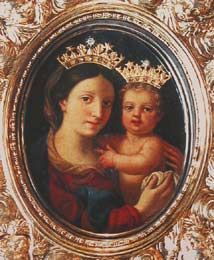Because this is worth repeating: let us keep a Catholic Christmas, friends. It is often hard to do, to break with the world, but let us do it. So, for today, we are posting these thoughts* from the 3rd of January 2019:
The other night, while driving in a suburb of what used to be known as Steel City, we noticed that nearly all of the home Christmas lights had been taken down, and put away. The houses had lost their Christmas glow and warmth, and appeared bare and plain, set as they were against the dark winter sky; but as we pulled up to a certain cottage, the object of our destination, our hopes soared, for there we saw the glow of Christmas lights, and the lit tree was spotted through the front window. The Christmas season continues in the Catholic Church, and this house belonged to Catholics; and the lights, and general festive nature of the place, sang this to us, even before we stepped on the property.
Fisheaters website has compiled a lovely summation of the Christmas season which just begins on Christmas day; and I will block quote a bit of it in the following:
This, not Advent, is the true Christmas Season. As most people in secular or Protestantized countries are putting away “Christmas-y” things, and as shopping malls stop blaring “Here Comes Santa Claus,” Catholics are just getting started. The cleaning and baking during penitential Advent pays off now, and the feasting and caroling begin!
The entire Christmas Cycle is a crescendo of Christ’s manifesting Himself as God and King — to the shepherds, to the Magi, at His Baptism, to Simeon and the prophetess, Anna (Luke 2). The days from the Feast of the Nativity to the Epiphany are known as “The Twelve Days of Christmas,” with Christmas itself being the first day, and Twelfthnight — 5 January — being the last of the twelve days. Christmastide liturgically ends on 13 January, the Octave of the Epiphany and the Baptism of Christ (at which time the season of Time After Epiphany begins). But Christmas doesn’t end spiritually — i.e., the celebration of the events of Christ’s life as a child don’t end, and the great Christmas Cycle doesn’t end — until Candlemas on 2 February and the beginning of the Season of Septuagesima.
In this way, just as From Ash Wednesday on, we commemorate Christ in the desert for forty days, and just as after Easter we celebrate for forty days until the Ascension, after Christmas we celebrate the Child Jesus for forty days — all through the season of Time After Epiphany — until Candlemas. The schema of those Christ Child celebrations looks like this:
Christmas
Christ is born
Feast of the Holy Innocents
Herod slaughters the baby boys in order to kill the Christ Child
The Circumcision (the Octave of Christmas)
Jesus follows the Law
Feast of the Holy Name of Jesus
After He is circumcised, He is named and becomes a part of the Holy Family
Twelfth Night
The Twelve Days of Christmas as a Feast come to an end
Feast of the Epiphany
Jesus reveals His divinity to the three Magi, and during His Baptism, and at the wedding at Cana
Baptism of Our Lord/Octave of the Epiphany
Christmas liturgically ends with the Octave of the Epiphany.
Feast of the Holy Family
Jesus condescends to be subject to His parents
Feast of the Purification (Candlemas)
40 days after giving birth, Mary goes to the Temple to be purified and to “redeem” Jesus per the Old Testament Law of the firstborn. Christmas truly ends as a Season with Candlemas and the beginning of Septuagesima.
There is also a lovely essay by Dom Gueranger titled, “The Mystery of Christmas” at the end of that Fisheaters post. It is beautiful; and I like, in particular, a spot where Dom Gueranger remarks on the rich liturgical celebrations which follow Christmas day, and refer back to Christmas day, to the birth of the Infant King. He states:
…from the day itself of our Saviour’s Birth even to the day of our Lady’s Purification (February 2, added by SF), there is, in the Calendar, an extraordinary richness of Saints’ Feasts, doing homage to the master feast of Bethlehem, and clustering in adoring love round the Crib of the Infant-God. To say nothing of the four great Stars which shine so brightly near our Divine Sun, from whom they borrow all their own grand beauty — St. Stephen, St. John the Evangelist, the Holy Innocents, and our own St. Thomas of Canterbury: what other portion of the Liturgical Year is there that can show within the same number of days so brilliant a constellation? The Apostolic College contributes its two grand luminaries, St. Peter and St. Paul: the first in his Chair of Rome; the second in the miracle of his Conversion. The Martyr-host sends us the splendid champions of Christ, Timothy, Ignatius of Antioch, Polycarp, Vincent, and Sebastian. The radiant line of Roman Pontiffs lends us four of its glorious links, named Sylvester, Telesphorus, Hyginus and Marcellus. The sublime school of holy Doctors offers us Hilary, John Chrysostom, and Ildephonsus; and in their company stands a fourth Bishop — the amiable Francis de Sales. The Confessor-kingdom is represented by Paul the Hermit, Anthony the conqueror of Satan, Maurus the Apostle of the Cloister, Peter Nolasco the deliverer of captives, and Raymond of Pennafort, the oracle of Canon Law and guide of the consciences of men. The army of defenders of the Church deputes the pious King Canute, who died in defence of our Holy Mother, and Charlemagne, who loved to sign himself ‘the humble champion of the Church.’ The choir of holy Virgins gives us the sweet Agnes, the generous Emerentiana, the invincible Martina. And lastly, from the saintly ranks which stand below the Virgins — the holy Widow — we have Paula, the enthusiastic lover of Jesus’ Crib. Truly, our Christmastide is a glorious festive season! What magnificence in its Calendar! What a banquet for us in its Liturgy!
Indeed, the Church gives us a banquet of delight in this Christmas season; so, let us do the Catholic thing, and keep the lights up, and the festivities going.
Merry Christmas!
~SCF
*some edits were made today






